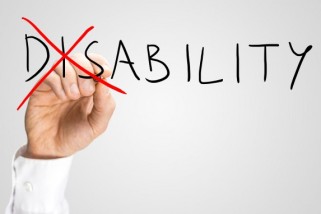Social workers practicing within the disability, developmental disabilities, and mental retardation fields can be involved on the micro, mezzo, or macro level. There is not just one social work practice model used in the disability field though and social workers choose from many based on the situation. (Dinitto & McNeece, 2008, p. 224)
- Behavioral Model – focuses on conditioning and changing undesirable behavior. This model uses positive and negative reinforcement to obtain the desired behavior, and it focuses on the actual change in behavior instead of why. (Dinitto & McNeece, 2008, p. 224-225)

- Crisis Intervention – this is generally used for short term, most often when an individual (or family) first learns hat he/she has acquired a disability that is permanent. Immediate fears and feelings are addressed before they can begin to plan for the long term. (Dinitto & McNeece, 2008, p. 225)

- Case Management – this is most often used when the client has multiple needs and the resources addressing those needs are scattered over the community. The case workers coordinate everything for the client. (Dinitto & McNeece, 2008, p. 225-226)

- Advocacy- the social worker performs tasks that the client cannot do themselves, or needs assistance with. It entails working with the client to find out what he/she needs as well as working with the community agencies to determine how the services can be obtained for the client. (Dinitto & McNeece, 2008, p. 226)
- Strengths Model – this takes the focus off the deficits associated with disability and can be expanded at the community level. It focuses on identifying strengths of clients and the environment, viewing client motivation as developing from a focus on strengths, and developing a cooperative relationship between the client and worker. (Dinitto & McNeece, 2008, p. 226)

- Empowerment – this centers on the principle of client self- determination. It assists clients to achieve their potential and to promote changes in their environment and in social policy that will promote social justice.This helps clients to achieve their full potential as well as improving society. (Dinitto & McNeece, 2008, p. 226-227)
- Independent Living – this is a different type of model because clients are responsible for running their own lives. Customers may use professionals as consultants, but they make their own decisions.This is mainly for people with physical disabilities. It is more geared to focusing on physical and attitudinal barriers rather than tasks that individuals have difficulties performing. Dinitto & McNeece, 2008, p. 227-8)
Sources:
DiNitto, D., & McNeece, C. (2008). Social work: Issues and opportunities in a challenging profession (3rd ed.). Chicago, IL: Lyceum Books







